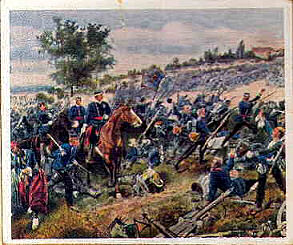All are from within a couple years of Ed's birth.
Main Street, ca. 1910. Is that a Model T Ford? Maybe earlier model; they only just came out in 1908. Reminds me of the story of my dad driving one (learning to drive, presumably), having an accident and putting his father through the windshield. Anybody else remember that tale?
Public School, ca. 1910.
There was a Catholic school as well, built in 1908. Presumably the Mocksters went there.
North Star Buffet, ca. 1909. Where folks went to belt one down, presumably.
In 1857, the first Mass was offered in the Sam Schmitt home, the father of Veronica Johnson and Barbara Born, on the site of the Adrian Rademacher residence, about two miles southeast of Waconia. The first church was built out of logs in 1859 on what is now the front lawn of the rectory.
Our ancestors quickly outgrew this log church and built a larger brick church in 1875 on the southeast corner of the same block, where the rectory driveway is today. Within twenty years it was outgrown, so a new church was planned and built on the present site in 1900. It remains today.
Engineers say the granite rock foundation can last at least two hundred more years.
Looking west over the lake, 1910.
All the early references call the lake "Clearwater Lake". Google maps label it "Lake Waconia."
I think the name Waconia actually means something close to clear water. True?
Landing at Coney Island, ca. 1908
I guess "the Coney Island of the West" was kind of a big deal.
Don't think I ever heard about it.

